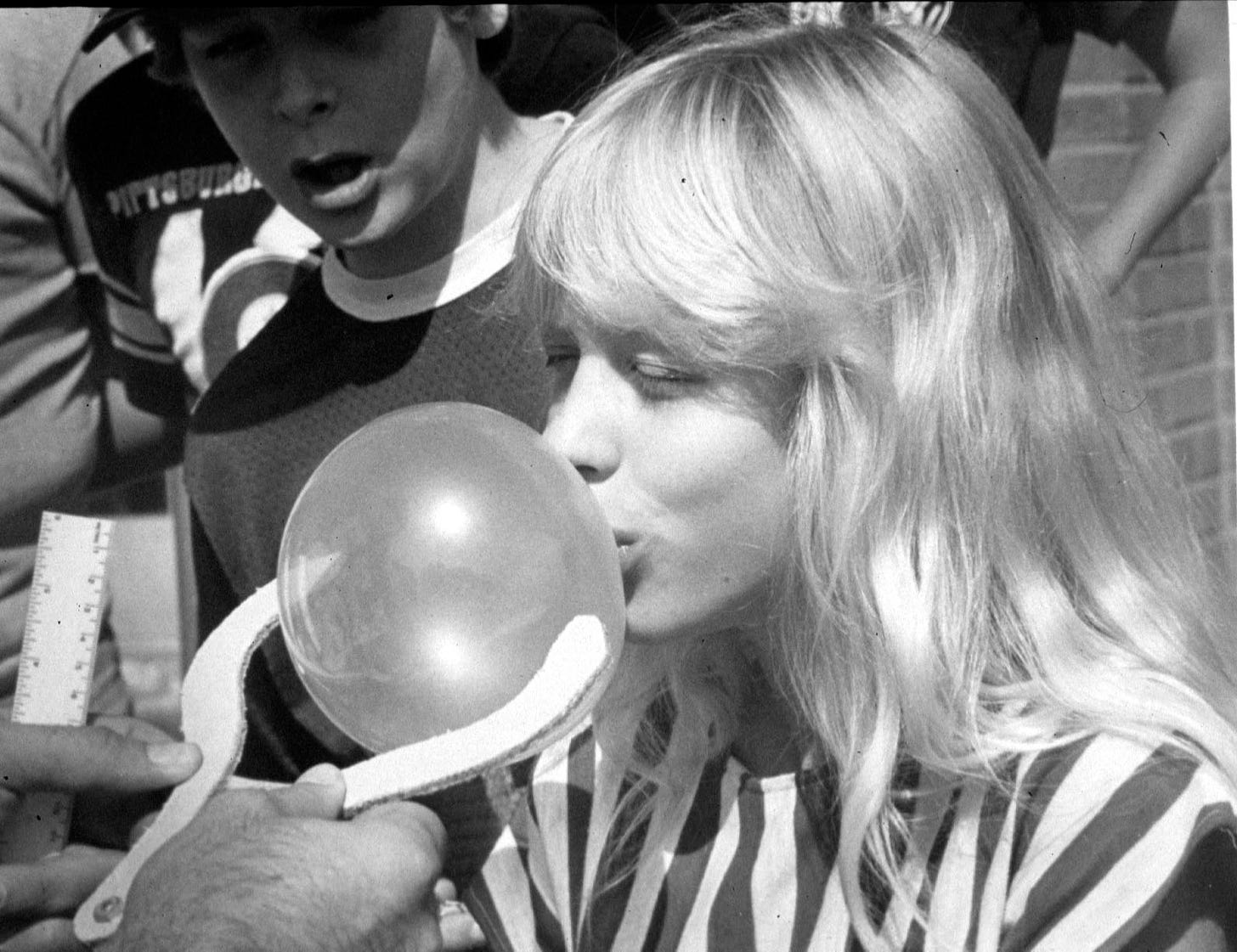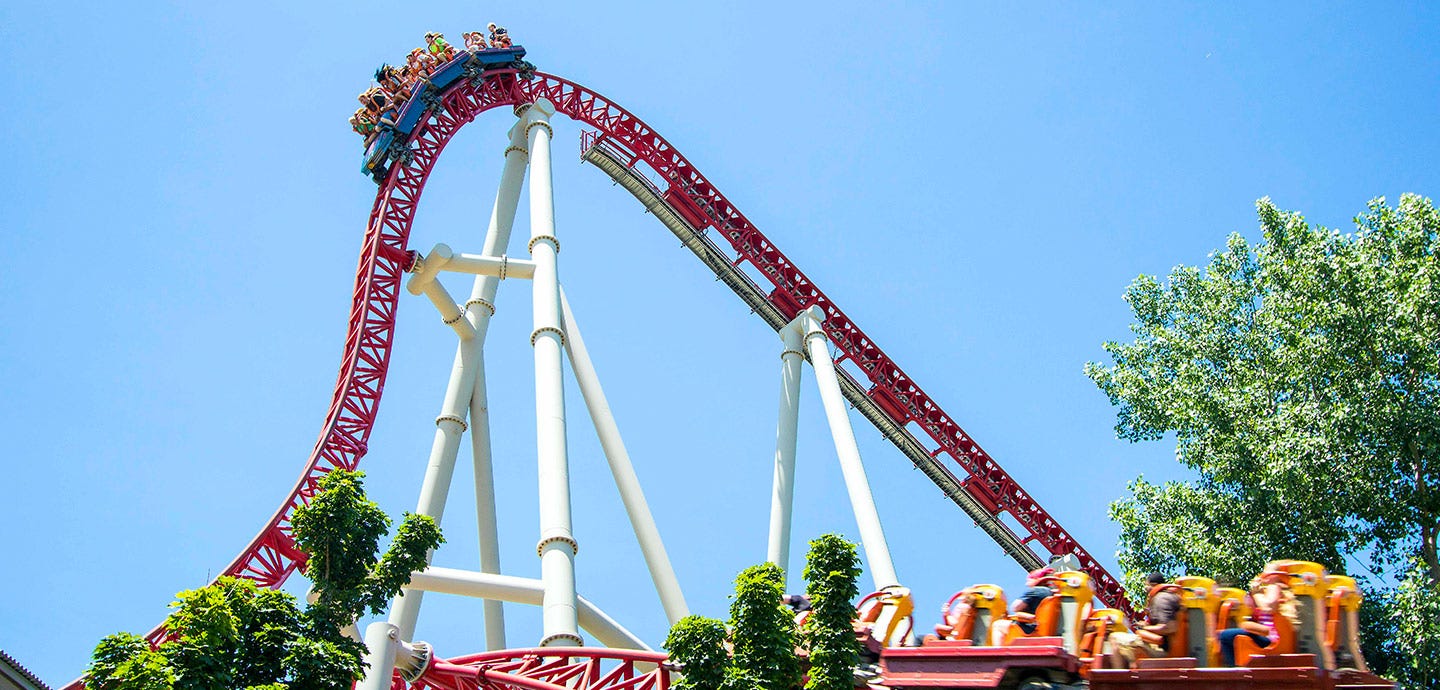

The Five Tools of Hedonic Design
source link: https://experimentalhistory.substack.com/p/the-five-tools-of-hedonic-design
Go to the source link to view the article. You can view the picture content, updated content and better typesetting reading experience. If the link is broken, please click the button below to view the snapshot at that time.
The Five Tools of Hedonic Design
Hacking the happiness treadmill
Photo cred: my dad
Two truths (no lies):
1. Once you are moderately happy, it’s very hard to get any happier.
2. Everybody secretly believes they can be the exception to this rule.
Psychologists have known for fifty years that people tend to adjust to the good things that happen to them, ending up about as happy as they ever were. It’s called the hedonic treadmill: chase after happiness and the treadmill speeds up just enough to keep you right where you are. The hypothesis has undergone some fine-tuning over the years––escaping poverty really does make people happier, for example––but the basic premise remains intact.
Everybody, even people who know about the hedonic treadmill, acts as if they aren’t on it. All of us––myself included!––work very hard every day to acquire additional prestige and currency and convenience and comfort, assuming that we'll feel better once we get it. Other people are running faster just to stay in place, but we are wisely chasing after one more promotion, publication, or piece of praise, and once we catch it, we will feel perfect, unending bliss.
We’re all on treadmills, of course, and that’s okay. There’s nothing wrong with sweating and straining a little; the problem is thinking that you’re going somewhere. True happiness actually comes from realizing that you cannot get any closer to your destination, and in fact that there’s no destination at all, only a journey. All we have to do is accept it!
…or we could hack the machine.
We know the hedonic treadmill is powered by adaptation: good things feel good at first, then they feel less and less good until they just feel neutral. To beat the treadmill, then, we have to figure out clever ways of resisting adaptation and keeping good feelings fresh.
Here are five tools for doing exactly that.
Disruptors
Most nice things get less nice over time, whether it’s a slice of cheesecake, a massage, or houseguests. Disrupters refresh pleasant experiences by interrupting them.
Examples:
Commercial breaks––people actually enjoy TV more with commercials
Short matches in online gaming. Notice that most shooters make team deathmatch last ten minutes or less!
That afternoon when someone is staying with you and they go see another friend who lives in the same city and you go to work or stay home and do laundry or whatever
Cutoffs
Cutoffs are the ultimate disruptors because they end the experience entirely. A well-timed cutoff can prevent the inevitable dip in pleasure that comes at the end of most things, whether it’s the last lukewarm gulp of a formerly cold lemonade, the awkward multiple goodbyes at the end of an otherwise excellent conversation, or the one day too many at the beach that leaves you bored and sunburnt.
Examples:
Closing time at the bar
The Sopranos finale
Wordle’s one-puzzle-a-day policy
Variators
Resisting adaptation doesn’t necessarily require worse experiences, just different ones. Variators are little modulations that keep experiences fresh.
Examples:
A flight of beer. The first sip is always the best sip, and a flight allows you to have several first sips instead of just one
A set of nice socks in an array of colors––wearing your blue paisley socks day and your red plaid sock the next day gently reminds you that it’s nice to have nice socks
A party that starts out quiet with just a few people, then gets loud when everybody arrives, then gets quiet again when most people leave
Recyclers
All good things must come to an end. Recyclers bring them back again. Your hiking trip in the Himalayas may only last a week, but the memories can last a lifetime––if you can find ways of recycling them.
Examples:
A pushpin map that keeps track of your travels
Buying physical books instead of ebooks and keeping them on your shelf as reminders of what you’ve read
The “Tourist” cocktail at P.F. Chang’s. When you order it, the bartender produces a Polaroid camera and takes a photo of you and your friends and gives it to you to take home. (Do not order alone.)
Peaks and finales
We tend to judge experiences by their peaks and their ends. We can take this rule seriously and try to make the best parts better, the worst parts less bad, and the endings universally good.
Peaks and finales pair well with recyclers, since we tend to remember the best part and the last part. A well-executed peak is the thing you reminisce about years later––not just spending a week at Cabo, but the one morning when you woke up with your partner to watch the sunrise and stood in the sand and smelled the sea and watched an old couple walking on the beach holding hands and imagined yourselves being them one day.
Examples:
Setpiece escape room experiences, like climbing into a coffin or getting blindfolded and handcuffed (you know, if you like those things)
Getting free dessert at the end of a meal (I’m still thinking about the surprise pudding the Mermaid Inn gives you)
Planning one big splurge activity during a vacation––a decadent meal, a night in a palatial AirBnB, front-row tickets at a show
What Hedonic Design Feels Like
Design is better experienced than explained. That’s why I recently proposed a Museum of Psychological Engineering where people could go to interact with good design and learn about what makes it so good. Fortunately, there is something very close to a Museum of Hedonic Design: Cedar Point Amusement Park in Sandusky, Ohio.
I grew up 25 minutes from Cedar Point (“America’s Rockin’ Roller Coast”), a G-force mecca that periodically unveiled coasters so ludicrous they had to invent new categories for them (“giga-coaster,” “strata-coaster”). It’s the thrill capital of the world (or at least the Midwest), and the jewel in its crown is the Maverick roller coaster.
The Maverick is a marvel of hedonic design. The ride begins with a literal peak, a 105-foot hill with a 95-degree drop. The track is packed with variators, banks and turns and flips and something called a “twisted horseshoe roll.” Then there’s a disruptor: the train comes almost to a standstill inside a tunnel, convincing first-timers that either the ride is over or something’s gone wrong. Then another peak: you suddenly accelerate to 70mph in three seconds, blasting out of the tunnel and into the sky. The finale is a rapid-fire series of banks, spins, and a flight over a canyon where you dodge cannons firing water plumes. The cutoff comes after a mere 150 seconds, just before your brain is totally liquified inside your skull. Recyclers are available as you stagger off the ride: they’ve taken a photo of you screaming your head off, and you can take it home for a mere $20.
All that is why I rode the Maverick six times in a row on a gloriously slow day at Cedar Point in 2019. I would have kept riding, but my friend got sick on account of eating some bad mustard and we had to go home. That might seem disappointing, but maybe some dijon-induced nausea was, in fact, the perfect cutoff.
See You at CP
Of course, even the finest hedonic design has its limits. It can’t turn sadness into gladness; hoisting someone out of depression takes more than tweaks. So if you’re feeling very bad, get a therapist, not a set of designer socks in different colors.
Fortunately, most people are happy, so they’re more in need of a boost than a hoist. But that boost is elusive because we often have the wrong ideas about how to gain ground on the treadmill. Nobody wants commercial breaks or smaller scoops of ice cream. Evolution endowed us with our desires because they kept us alive, not because they made us happy.
Staying alive is now rather straightforward; staying happy is not. So I’ll do my doctor-recommended thirty minutes a day on the hedonic treadmill to keep myself fit. But the rest of the time, you’ll find me on the Maverick.
Recommend
About Joyk
Aggregate valuable and interesting links.
Joyk means Joy of geeK

